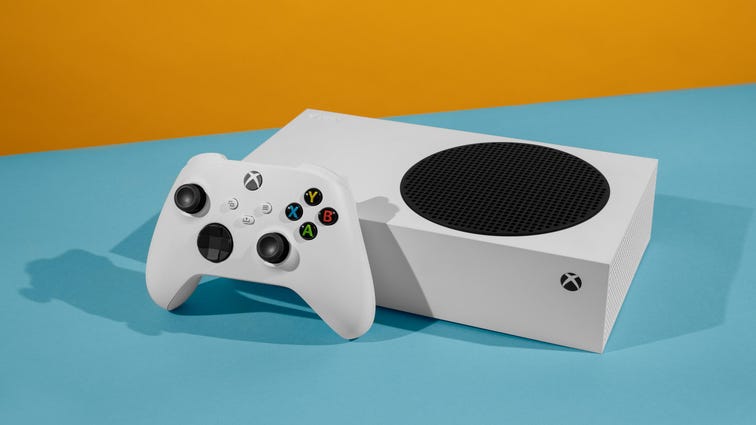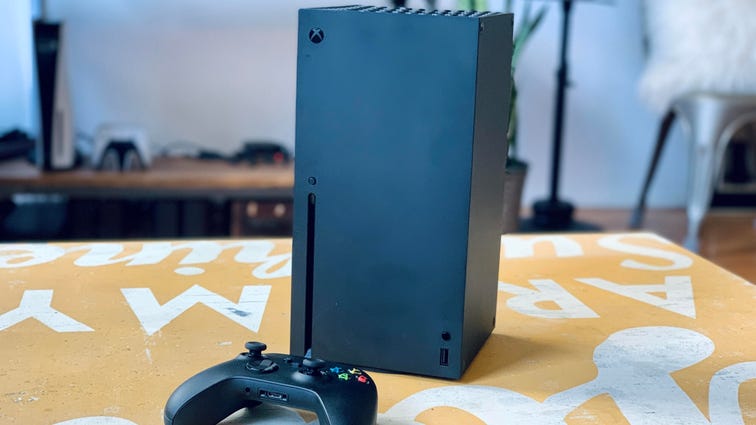Is 4K resolution and an optical drive worth an extra $200 to you? That’s the main difference between the $500 (£450, AU$749) Xbox Series X and $300 (£250, AU$499) Xbox Series S. Unless your life is ruled by FOMO, if money is any object, the console choice clearly comes down to talking yourself into buying the Series X rather than talking yourself out of it. And If you want a fan model, like the Xbox Series X Halo Infinite Limited Edition, your only choice is the Series X; it’s in preorder now and slated to ship in early November.
Yes, technically the Xbox Series X has more memory and beefier processing components that run at faster speeds than the Series S, but it’s all in service of hitting 4K and 120 frames per second while gaming without upscaling. Or it’s 8K/60 frames per second with it — if you think you need it.
The Series S’ target of 1440p and 120 fps is a lot less demanding, hence its lower-power components and smaller body. For streaming video, the Series X can do native 4K and upscale to 8K, while the series S upscales to 4K.
The Series S comes with only 512GB of SSD storage compared with the Series X’s 1TB, but thanks to Smart Delivery, games optimized for the new consoles won’t take up as much space on the Series S as the Series X. If you want to keep a lot of big games on deck and in progress, the Series S supports the same Velocity Architecture for SSD expansion, either via swapping the NVMe or the pricey (relative to the price of the console) Seagate 1TB plug-in card. Whizzy new game features are designed to be compatible with both and they have the same support for the new wireless controller and other peripherals.
Microsoft’s offering both with its two year Xbox All Access bundles — that’s its plan for leasing an Xbox plus a subscription to Xbox Game Pass Ultimate — with the Series X for $35 a month and the Series S for $25.

Microsoft
The biggest challenge for a living-room-bound Series S is finding a TV that supports the 1440p maximum resolution natively rather than forcing it to dial back to 1080p. Most TVs do 1080p or 4K (or both). But if the console is cohabiting with your workspace, there are a ton of compatible monitors you can connect to it. The Series X may look better, but if you’re playing on a monitor-sized screen, you won’t miss the 4K as much.
The Series S is a much better deal if you’re planning to sign up for Xbox All Access. Once you subtract the price of the console, you end up paying about $12.50 a month for Xbox Game Pass Ultimate compared to its solo $15 monthly rate. If you have an older console, though, you may be able to get the Series X for as little as $300 with a trade-in.
Read the Xbox Series S review.

Microsoft
If you’ve been gaming at 4K on an Xbox One X, you may want to shell out the bigger bucks and upgrade to this model. You’ll be able to get a higher frame rate with the One S, but that’s at the expense of resolution. If you’re used to playing in 4K, 1440p might look soft to you. But that will depend on the size of your screen and your visual acuity.
Xbox All Access isn’t a terrific deal with the Xbox Series X. At $35 a month, once you subtract the price of the console you’re shaving only about 80 cents off putting the console on your credit card and subscribing separately to Xbox Game Pass Ultimate. (If you don’t have a credit card, remember that in order to sign up for the plan you still have to pass a credit check with Microsoft’s third-party financing company, Citizens One. The latter is the only way to subscribe to All Access as well.)
Read the Xbox Series X review.
Comparative specs
| Xbox Series X | Xbox Series S | |
|---|---|---|
| Processor | 8-core AMD Ryzen Zen 2-architecture CPU at 3.8GHz (3.6GHz with SMT) | 8-core AMD Ryzen Zen 2-architecture CPU at 3.6GHz (3.4GHz with SMT) |
| Graphics | AMD Navi/RDNA 2-family GPU with 52 CU at 1.825GHz (12TFLOPS FP32) | AMD Navi/RDNA 2-family GPU with 20 CU at 1.565GHz (4TFLOPS FP32) |
| Video memory | 16GB GDDR6 with 14Gbps 320-bit interface (10GB at 560GBps allocated to GPU, 6GB at 336GBps allocated to rest of system with 3.5GB for GPU) | 10GB GDDR6 (8GB at 224GBps allocated to GPU, 2GB at 56GBps allocated to rest of system) |
| Storage | 1TB NVMe SSD PCIe 4.0; proprietary 1TB SSD add-on module; USB 3.2 external HDD support | 512GB NVMe SSD PCIe 4.0; proprietary 1TB SSD add-on module; USB 3.1 external HDD support |
| Optical drive | Yes, 4K Blu-ray | No |
| Maximum output resolution | 8K 60fps; 4K 120 fps | 1440p, 120 fps |
| Audio | Ray traced | Ray traced |
| New controller features | Share button, Dynamic Latency Input | Share button, Dynamic Latency Input |
| VR support | None | None |
| Backwards compatibility | Xbox One and supported Xbox 360 and Xbox games | Xbox One and supported Xbox 360 and Xbox games |
| Price | $500, £450, AU$749 | $300, £250, AU$499 |

Be the first to comment